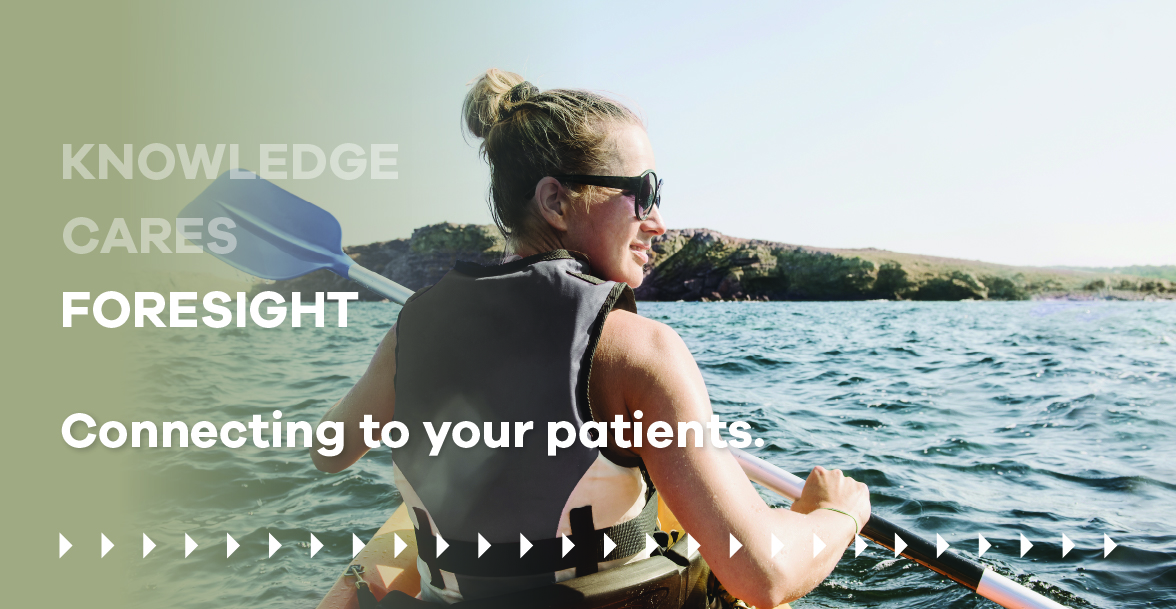Each year, we celebrate National Sunglasses Day on June 27th — a holiday brought to you by The Vision Council. On this day, we emphasize the importance of wearing shades to protect the eyes from the sun’s harsh ultraviolet (UV) rays. Many join in on the fun by posting a #SunglassSelfie on their favorite social media outlets, while others sport their shades while outdoors.
In light of this holiday, we wanted to cover some crucial information about sun protection and sunglasses — info and resources that could be very useful to you as an ECP looking to discuss sunwear with your patients.
Breaking Down the Truth About Sun Damage
Most people are unaware that every day they spend in the sun without sunglasses may be putting them at risk of eye damage — possibly even permanent vision loss. To help your patients understand the danger of sun damage, start by breaking down the major structures of the eye. Then, follow up with a brief explanation of how the sun can inflict damage on those parts specifically, from the eyelids and the front surface of the eye to the lens and retina.
During your patient’s visit, explain that the best way to protect the eyes, eyelids, and skin around the eyes from sun-related damage is to wear quality sunglasses that block 100% UV rays and also shield the eyes from blue light. Remember: UV radiation can penetrate clouds, so sunglasses are important on overcast and cloudy days as well as sunny days — through both winter and summer.
Informing Your Patients About Solar Blue Light
Your patients probably know about the term “blue light” as it relates to working in front of a screen for hours a day — and that it can cause digital eye strain and a number of other symptoms, such as headaches, tired or burning eyes, and more. However, your patients may not know that blue light primarily comes from the sun (blue light’s number one source). An estimated 25 to 30% of sunlight consists of solar blue light rays, so you can make an impression on your patients with this info while diving into the pros and cons of solar blue light exposure.
Depending on your patients’ activities and work environment, they may consider multiple pairs of glasses — one for computer use indoors and another for outdoor blue light protection.
Talking to Patients About Prescription Sun Lenses
Millions of people who could benefit from prescription sun lenses don’t have them and are unaware they need them. In the U.S. independent market, consumers purchase 39 million pairs of prescription eyeglasses annually — but only 3 million are prescription sun lenses. This means that the overwhelming majority of your patients could be experiencing discomfort outdoors.
Patients trust you to care for their eyes, and they need to trust you to make good recommendations about sun protection. When you’re discussing the potential for prescription sun lenses, make sure to:
- Keep it conversational and educational
- Talk about prescription sun lenses in the middle of the exam instead of at the end
- Consider adding questions to patient intake forms that could help initiate conversations based on family history, time spent outdoors, and time driving
Helping Patients Choose the Right Sunglasses
Now that your patient is interested in prescription sun lenses, you can move on to the next most important step: the frames. Though the quality of sunglasses usually is determined by the absorptive characteristics of the lenses, people typically focus on the comfort, fit, and appearance of the frame. After all, people can’t feel if their sunglasses are protecting their eyes from the sun’s harmful UV and high energy visible (HEV) radiation, but they sure can feel if the frame is uncomfortable or not fitting properly.
But prescription sunglasses don’t mean your patients (including contact wearers) have to sacrifice fashion for functionality. Lenses like our Sensity Shine sun lenses offer you more: extra darkness outdoors, extra style and exclusive look, 100% protection against UV rays, and glare reduction.
Protecting Children’s Eyes from the Sun
Not only grown-ups need high-quality sunglasses. Too much sun can significantly increase a person’s risk of cataracts, macular degeneration and other eye problems later in life — risks that depend on one’s cumulative exposure to sunlight over a lifetime. So, the best way to protect a person’s eyes from radiation damage is to begin dispensing high-quality sunglasses for children at an early age — even if they don’t need prescription eyeglasses.
Children usually spend significantly more time outdoors than adults, increasing their exposure to ultraviolet (UV) and other solar radiation. Unfortunately, many parents remain unaware of the importance of sunglasses for children. According to a 2012 Vision Council survey, 74 percent of American adults said they wear sunglasses for UV protection, but only 58 percent require their children to wear them. With this information, make sure your patients know the importance of sunglasses for their kids and the future of their vision.
Shine Some Light on Sun Lenses for National Sunglasses Day
We hope this information gives you a good idea of what to cover during your upcoming visits with patients. This is a good time to bring up the conversation, take some sunny selfies, and spread the good news on UV protection and long-lasting, healthy vision.
